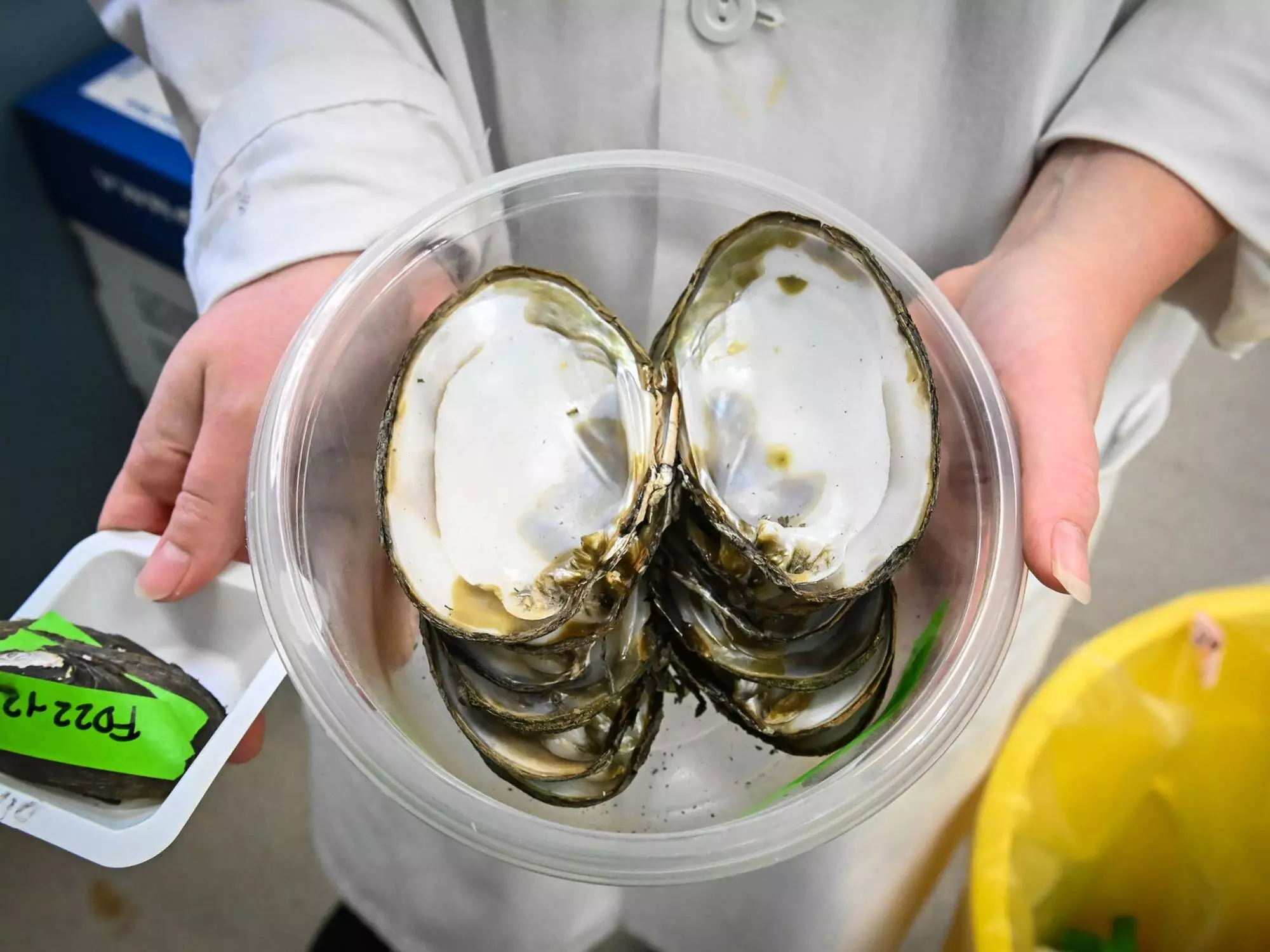Freshwater mussels play a crucial role in indicating the cleanliness of their environment as biomonitors. They have the ability to absorb contaminants from their surroundings, reflecting the state of their habitat. A recent study conducted by researchers from Penn State’s Department of Civil and Environment Engineering found alarming levels of radium in mussels downstream of a centralized treatment facility in Western Pennsylvania. This facility had been treating fracking wastewater from the oil and gas industry for over two decades, leading to concerning implications for both the mussels and the ecosystem as a whole.
The researchers discovered traces of radium in the tissues and shells of mussels, directly linked to the wastewater from fracking activities in the Marcellus Shale region. This discovery highlights the long-lasting impact of human activities on aquatic life, even after the cessation of wastewater disposal at the facility in 2019. The high salinity and radioactive materials present in the discharged water posed a significant threat to the mussels closest to the discharge sites, resulting in their population decline. However, mussels further downstream exhibited a tolerance to these contaminants by absorbing them into their shells and tissues.
Unlike other types of wastewater, oil and gas-produced wastewater from fracking contain unique radioactive element ratios that can serve as a signature identifying their origin. The distinctive ratios of radioactive elements allowed the researchers to pinpoint the source of the contaminants to the treated Marcellus Shale wastewater. This finding underscores the importance of monitoring and regulating wastewater disposal practices to prevent further ecological harm.
The presence of radium in the mussels poses serious health risks, as exposure to radiation can lead to various health problems. In comparison to Brazil nuts, which naturally accumulate radiation from the soil, the mussels exhibited significantly higher levels of radium. This heightened exposure raises concerns about the potential impacts on other aquatic life and the transfer of contaminants up the food chain. While freshwater mussels are not harvested for human consumption, larger species such as waterbirds and otters regularly feed on them, leading to further contamination of the ecosystem.
The findings of this study underscore the need for stringent regulations regarding wastewater disposal practices in regions where mussels play a vital role in the ecosystem. By understanding the impact of human activities on aquatic life, policymakers and environmental agencies can develop guidelines to minimize contamination and protect vulnerable species. Additionally, the study emphasizes the importance of ongoing monitoring and research to assess the long-term effects of fracking wastewater on freshwater ecosystems.
The study on the impact of fracking wastewater on freshwater mussels highlights the interconnectedness of human activities and the environment. By recognizing the role of mussels as biomonitors and understanding the implications of contamination on aquatic life, we can work towards sustainable environmental practices and safeguarding vulnerable species. The results of this research serve as a wake-up call to reevaluate current wastewater disposal methods and prioritize the preservation of our freshwater ecosystems for future generations.


Leave a Reply